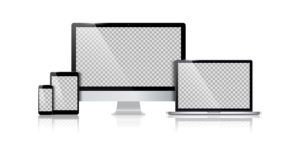Effective Website Design
The success of any web site is not determined by its visual design, but by its utility, and most importantly usability.
The user is in the center of attention because the user is the one who is clicking the mouse and using the page, so everything must revolve around him.
The user-centric approach to design is the standard for creating a successful and profitable web design. The bottom line is – if a user can’t use it, it’s as if it doesn’t exist.
Catering to the needs and desires of users is what good web design is all about.
You need to ask yourself if your page visitors are looking for entertainment, information, visual or some other interaction, or perhaps a business transaction.
The purpose of every web page needs to be clear and it must fulfill the user’s need in the best way possible.
Good visuals capture attention and squeaky wheels need to get greased.
Establishing a visual hierarchy must be among the highest priorities of any web design if you want it to be good. If you don’t know it yet, visual hierarchy is the order of perceiving the details by the human eye.
Some parts of the web site have a natural advantage over the other. Stuff like calls to action, forms, value propositions, and other. Make sure you include them properly in your website’s header design. Don’t cram them all in there. If it feels overcrowded, place some of them lower. Don’t think about the fold too much.
Those naturally need more attention than other less important ones. If your website main menu has for instance 10 items, you need to ask yourself if all of them are equally important.
How do you want to guide the user and where should he click? More important links need to be more prominent.
Your business objective, the purpose of your site, needs to guide you in ranking the importance of your elements. You can’t prioritize if you don’t understand the specific goal of the site.
When offering the user a certain tool or a service, you must keep the user’s requirements as low as possible.
The less the actions a user needs to make to try out a certain service, the higher the chance he or she will use it.
When a visitor comes to the site for the first time, he is likely to try and play with the services, but still highly reluctant to fill out long forms and create accounts he may not ever use again. It is a good thing to allow the user to explore the site and services without being forced to enter personal data.
It is obviously not a good thing to ask for the users to enter an email address simply to test out some of the features.
Communication
People need to acquire the desired information quickly and without any unnecessary hindrance, which is why your communication with the visitor via the site content needs to be extremely clear and easy.
You must always keep in mind the following: organizing, headline and sub-headline info, bullet points (rather than long paragraphs), ‘waffle cutting’ writing.
Design Clearness and use White Space
White space, or what is also called negative space, is the empty portion of the page. Stuff that’s between the lines, graphics, margins, columns, gutters, and visuals.
White space is plainly said blank space and it is one of the key components of the design. It’s closely tied to the objects that are a part of your design. Actually, white space is what enables you to establish the visual hierarchy of information, no matter its type, color, or image.
If you design a page that is without blank space, filled with graphics and text, you are risking that it will appear cluttered, chaotic, difficult to access in any way, and it will turn people away. This is one more reason why simple design is much better.
Your page will look clean and organized when you have sufficient white space. This is imperative in making it clear and understandable, and pointing out your message. This does not mean simply to have less content on the page, but it also implies an effective usage of the space within it. You must use the negative space wisely to communicate with your visitor.
White space allows you to focus on the main purpose of the site and make it easy to access and understand.
Having a web page organized like that will imply sophistication, elegance, and good taste and inspire focus and legibility.
Using the traditional 1-2-3-Done-Steps with large buttons in web design is often criticized, but from the perspective of good web design, this is not wrong.
Quite the contrary, this method promotes all the qualities we’ve talked about so far: ease of access, clearness, main message emphasis, user-friendly atmosphere, attention guidance.
Giving the user a clear perspective of the functions available on the page is the main principle of designing a successful interface.
It doesn’t matter which path you take to achieve that, as long as you do. Making the user feel comfortable and his or hers intention understood and catered for is the only thing that matters.
The term Sans Serif stands for contemporary fonts that are easier to read and without any decorative finishes, like Arial or Verdana.
The ideal size for your font to be used in web design is 16px with 3 typefaces max of 3 point sizes. This will keep your text streamlined.
 It is necessary to adapt your writing style to the browsing habits and preferences of an average user. Promo texts probably won’t be read at all, nor will long paragraphs without any bold or marked keywords and images.
It is necessary to adapt your writing style to the browsing habits and preferences of an average user. Promo texts probably won’t be read at all, nor will long paragraphs without any bold or marked keywords and images.
Exaggerated language is mostly ignored by users.
Stay on point. Stay away from cleverness and cuteness in naming, marketing-induced terms, company names, or any unfamiliar technical terms. Use simple copy. Simple is effective.
A good example is if you are promoting a service and you want to direct the visitor to ‘sign up’, it is much better to point them to the ‘start now!’ option, but both are way better than let’s say ‘explore our services’.

